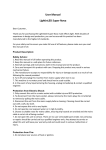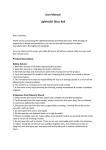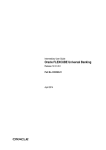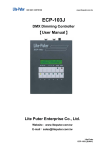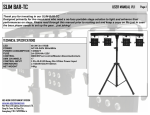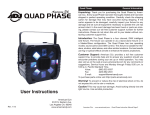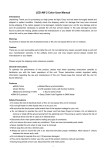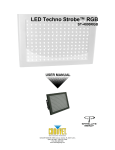Download User Manual LightinLED Par
Transcript
User Manual LightinLED Par Dear Customer, Thank you for purchasing the LightinLED Par Light. With decades of experience in design and production, you can be assured this product has been manufactured to the highest of standards. For your safety and to ensure you make full use of all features, please make sure you read this manual in full. Product Description: Safety Advice: 1. Read this manual in full before operating this product. 2. Keep this manual in a safe place for future reference. 3. Heed all warnings and instructions, both in this manual and on the product. 4. Carry and transport this product with care. Dropping this product may result in serious mechanical failure. 5. The manufacturer accepts no responsibility for injury or damage caused as a result of not following the manual provided. 6. Turn off and unplug this machine from mains supply when not in use. 7. This machine is not water proof and should not be used outside. 8. In the event of any liquid entering the housing, unplug immediately & contact a qualified engineer. Protection from Electric Shock: 1. Only connect this unit to a mains socket with suitable trip and RCD protection. 2. To disconnect from the mains socket, always remove by the mains plug. Do not attempt to remove by pulling the mains cable. 3. Disconnect the unit from the mains supply before cleaning. Cleaning should be carried out with a soft, dry cloth. 4. Do not expose this unit to any liquids. 5. Do not operate near exposed water or in high humidity. 6. Choose a suitable route for mains cables, ensuring trip hazards are avoided and the mains cable is not at risk of being crushed. 7. Do not open this unit to service. There are no user serviceable parts inside. Any servicing or repairs should be carried out by a qualified engineer only. Any attempt to service or adapt this unit will leave your warranty void and could result in serious malfunction or injury. Protection from Fire: 1. Do not place near sources of heat or ignition. 2. Do not cover or block any ventilation holes. 3. Check your AC wall socket will take the power you are applying to avoid overloading the mains supply. Protection from Injury and Damage: 1. Do not attempt to modify this unit. 2. Always install the unit in a suitable location where vibrations to the unit are avoided. 3. Check this unit matches the mains voltage and frequency before plugging it in to your mains socket. 4. In the event that any object or liquid enters the machine, switch off immediately, remove from mains and consult a qualified engineer. 5. Should you experience ant malfunction or damage to the mains cable, disconnect from the mains supply immediately and consult a qualified engineer. 6. All parts should be replaced with genuine spare parts and carried out by a qualified engineer. Contents & Unpacking: Before beginning your initial setup check the unit has not been damaged in transit. In the event there is damage to the housing, cable or internal components contact your dealer immediately. Specifications: Power supply: 100-240V / 50/60Hz Power Consumption: 60W LED: 1 Watt RGBW x54 Dimensions: 200 x 200 x 135mm Weight: 1.14Kg Features: An LED par can with a combination of red, green, blue and white LED’s. There are many built in programmes or the light can be DMX controlled. Features Include: Red, Green, Blue and White LED’s. Each LED is 1 Watt. Supplied with Hanging Bracket. Fade and Hard Switching Programmes. Manual Colour Selection. MENU dOO1: Use the up and down button to select a DMX address. IP: Use the up and down buttons to select IP03 when using the light in DMX mode. A1: Manual Colour selection from 1-18, use the up and down buttons to select a colour. A2: Colour hard switching programme, the numbers that are flashing can be used to set the speed from 1-32, using the up and down buttons. A3: Fade programmes 1-19, use the up and down buttons to select a programme, press enter, the last two numbers flash, you can then select a speed using the up and down buttons 1-32. A4: Set a sound to light strobe programme from 1-19. A5: Automatic strobe programme 1-19, press enter, the last two numbers flash, select a speed using the up and down buttons from 1-32. A6: Built in fading, strobing and hard switching programme. A7: Automatic hard switching programme 1-19, press enter, the last two numbers flash, select a speed using the up and down buttons from 1-32. R: Red manual adjustment, 0-255. G: Green manual adjustment, 0-255. B: Blue manual adjustment, 0-255. W: White manual adjustment, 0-255. DMX Channel Layout Channel 1 2 3 4 5 6 7 8 1-10 Manual control of colours, using channels 4-8. 11-50 Manual colour selection with channel 2. 51-100 Hard switching programme with channel 3 controlling speed. 101-150 Fade Programme, channel 2 controls programme selection, channel 3 controls speed. 151-200 Sound to light strobe programme, channel 2 selects colours. 201-255 Strobe Programme channel 2 selects colours, channel 3 selects speed. Colour/Programme selection. Speed Dimmer Red Green Blue White DMX BASICS DMX is short for “digital multiplexer”, which is a universal protocol designed for the entertainment industry. It allows control of intelligent fixtures like scanners, moving heads, LED par cans, dimmer packs & effects machines etc. DMX allows you to control many fixture channels, normally up to 512, with varying channels from 0-255 (0-100%). This will give control of channels such as gobo selection, movement, colours, dimming and timing to name just a few. DMX is a very good system, as all this information can be sent down one cable. Used in conjunction with a DMX controller with memory, all of your channel settings can be saved and recalled easily. DMX was designed so that all manufacturers can use the same protocol/language to control their fixtures, allowing the end user to use any make of fixture from their DMX controller as long as both are DMX compatible, and the controller has enough channels to control the fixture that is attached. Fixtures have an input and output DMX socket, allowing you to connect from the controller to the first fixture then from that fixture to the next (this is often referred to as “daisy chaining”). Sockets are normally 3 pin XLR but can be 5 pin XLR. DMX fixtures need to have a DMX address set, this is so they can then decode the correct information from the controller. This is normally done by a digital display panel, where the address can be changed by simple up and down buttons; the address ranges from 1-512. Alternatively it may be controlled by a row of small switches, called dip switches; on this type system, the required address is then converted to a binary number. To work out your dip switch settings you can simply download a DMX calculator from the internet or see our table further on. The order in which fixtures are connected in a DMX line does not influence the DMX address, a fixture set to DMX address 1 can be put in a DMX line anywhere from beginning, middle to end. As long as it has its address set to 1, it knows to take information from that point onwards. DMX Wiring 3 PIN 5 PIN PIN 1 GND PIN 1 GND PIN 2 - PIN 2 - PIN 3 + PIN 3 + PIN 4 NOT USED PIN 5 NOT USED 3 pin wiring is more common, 5 pin is the correct way. 3 pin may be used to save on cost. With 5 pin connections, not all pins are used, though it is worth checking your manual for your fixture, as some lights use the unused pins for low voltage control. 5 pin would be better so there is no confusion over mixer leads and DMX leads in larger rigs. Sending a mixers 48v phantom power down a DMX cable could damage the DMX light. If making cables always use suitable DMX cable and do not connect pin 1 GND to the outer casing of the connector as you might do with audio cables, as this may cause erratic behaviour from your fixture. Do not make “Y” leads to split cables to fixtures; always use the in and out sockets or a DMX splitter, as again this may cause erratic behaviour from your fixture. We recommend you to put a DMX terminator in any fixture which hasn’t got a DMX lead connected from the output socket to another fixture; this again is to reduce unexpected behaviour. A DMX terminator is simply a male XLR plug with 120 ohms, ¼ watt resistor soldered across pin 2 & 3. Each fixture takes up 5 DMX Channels (See Above) The controller is a fairly basic, 24 channel. You have a cable from the controller to the first fixture cable, then from first to second and so on. The last light then has a DMX terminator plugged in. Fixture 1 would be set to DMX address: 1 dipswitch number 1 on. Fixture 2 would be set to DMX address: 6 dipswitch numbers 2 & 3 on. Fixture 3 would be set to DMX address: 11 dipswitch numbers 1, 2 & 4 on. Fixture 4 would be set to DMX address: 16 dipswitch number 5 on. We recommend you read manuals for your light and controller in full. Some controllers tell you what each fixture address needs to be, and some lights need other settings changed before they will work. When setting your DMX address, you must ensure fixtures don’t overlap from one to the next. You can set 2 fixtures to the same address, and as long as they are the same fixture (i.e. same channel layout) then they will then do the same as each other.










